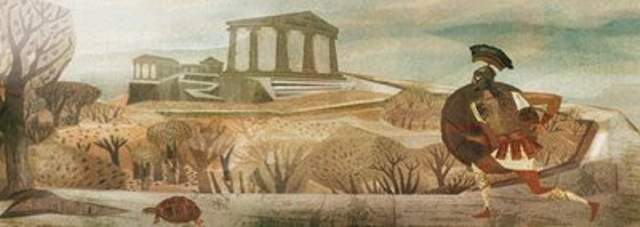THE TIME PROBLEM

- 3590
- 1012
- Glen Vandervort Sr.

Everyone has heard of the famous race between Achilles and the turtle. Achilles could walk 12 times faster than the turtle, so that Zenon, the Greek philosopher, arranged a race in which the turtle would have 12 miles of advantage.
Zenón argued that Achilles would never reach the turtle because while he advanced 12 miles, the turtle would advance 1. Then, when Achilles had traveled that mile, the turtle would have advanced 1/12 of mile. There would always be a small distance between them, although this distance became smaller and smaller.
We all know, of course, that Achilles reaches the turtle, but in these circumstances it is not always easy to determine exactly the point in which it passes it.
We are going to propose a problem that reveals the similarity between the famous race and the movements of the clock hands.
When exactly noon, the two hands are gathered. And one wonders when, exactly, the hands will come back to join. (For "exactly" we mean that time must be expressed accurately to second -second fractions). It is a very interesting problem, base of numerous riddles referring to the clock, all fascinating in nature. For this reason, all fans are advised to seek a clear understanding of the principles at stake.
SolutionIf the minuter leaves twelve times faster than the time of the hour, both needles will be eleven times every 12 hours. Taking as constant the eleventh part of 12 hours, we discover that the hands will be found every 65 minutes and 5/11, or every 65 minutes, 27 seconds and 3/11. Therefore, the hands will meet again at 5 minutes, 27 seconds and 3/11 after 1.
The following table shows the time of the eleven meetings of the hands for a period of 12 hours:
| Hours | Minutes | Seconds |
| 12 | 00 | 00 |
| 1 | 05 | 27 and 3/11 |
| 2 | 10 | 54 and 6/11 |
| 3 | 16 | 21 and 6/11 |
| 4 | twenty-one | 49 and 1/11 |
| 5 | 27 | 16 and 4/11 |
| 6 | 32 | 43 and 7/11 |
| 7 | 38 | 10 and 10/11 |
| 8 | 43 | 38 and 2/11 |
| 9 | 49 | 05 and 5/11 |
| 10 | 54 | 32 and 8/11 |

